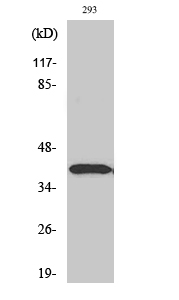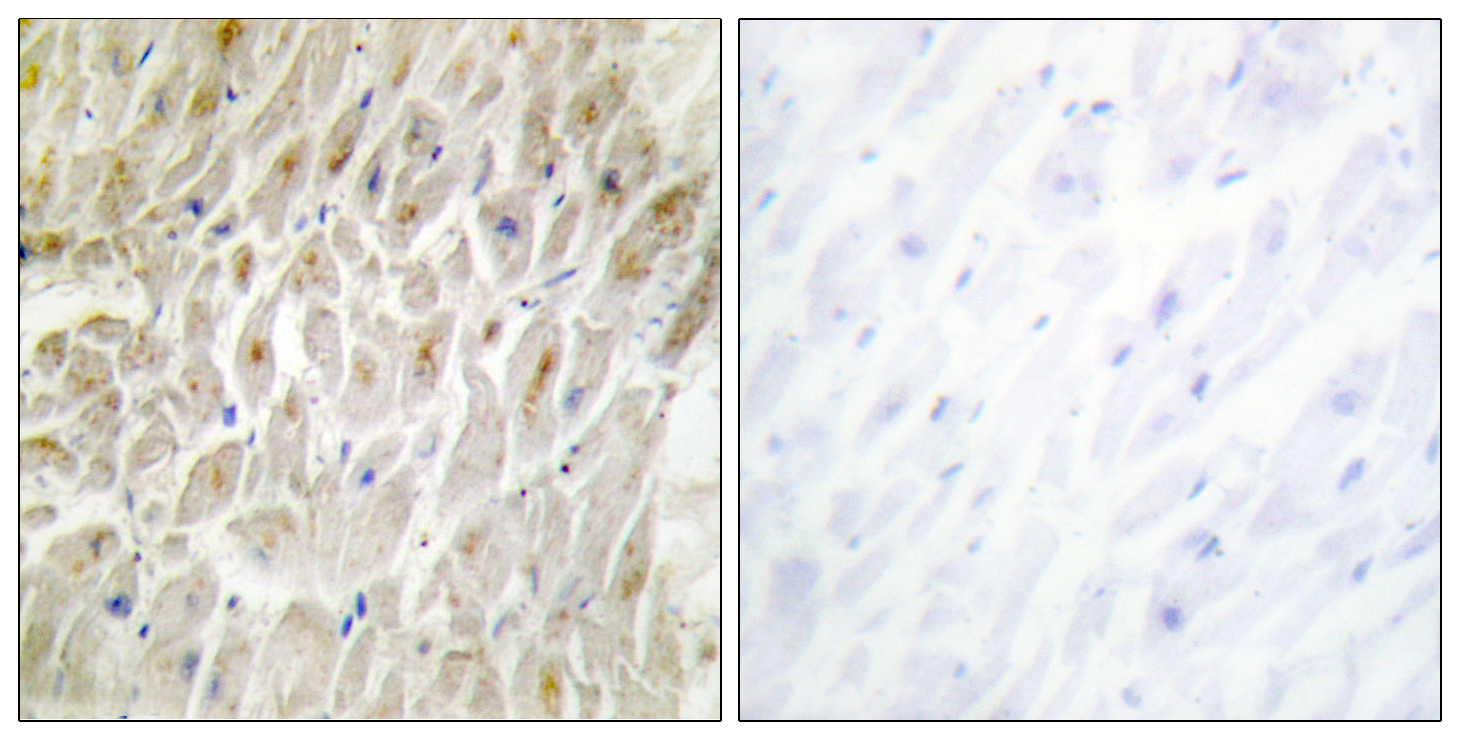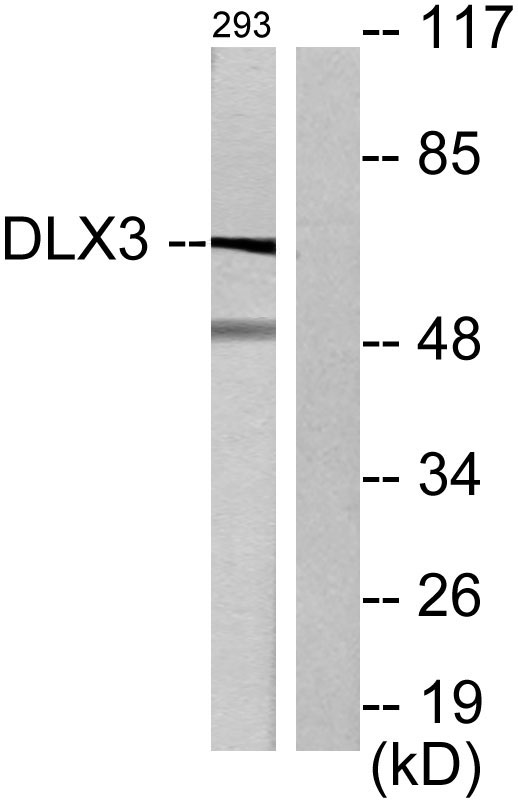Dlx-3 Polyclonal Antibody
- 货号:YT1358
- 应用:WB;IHC;IF;ELISA
- 种属:Human;Mouse
- 蛋白名称:
- Homeobox protein DLX-3
- 免疫原:
- The antiserum was produced against synthesized peptide derived from human DLX3. AA range:71-120
- 特异性:
- Dlx-3 Polyclonal Antibody detects endogenous levels of Dlx-3 protein.
- 组成:
- Liquid in PBS containing 50% glycerol, 0.5% BSA and 0.02% sodium azide.
- 来源:
- Polyclonal, Rabbit,IgG
- 稀释:
- WB 1:500 - 1:2000. IHC 1:100 - 1:300. ELISA: 1:40000.. IF 1:50-200
- 纯化工艺:
- The antibody was affinity-purified from rabbit antiserum by affinity-chromatography using epitope-specific immunogen.
- 储存:
- -15°C to -25°C/1 year(Do not lower than -25°C)
- 其他名称:
- DLX3;Homeobox protein DLX-3
- 背景:
- Many vertebrate homeo box-containing genes have been identified on the basis of their sequence similarity with Drosophila developmental genes. Members of the Dlx gene family contain a homeobox that is related to that of Distal-less (Dll), a gene expressed in the head and limbs of the developing fruit fly. The Distal-less (Dlx) family of genes comprises at least 6 different members, DLX1-DLX6. Trichodentoosseous syndrome (TDO), an autosomal dominant condition, has been correlated with DLX3 gene mutation. This gene is located in a tail-to-tail configuration with another member of the gene family on the long arm of chromosome 17. Mutations in this gene have been associated with the autosomal dominant conditions trichodentoosseous syndrome and amelogenesis imperfecta with taurodontism. [provided by RefSeq, Jul 2008],
- 功能:
- disease:Defects in DLX3 are a cause of trichodentoosseous syndrome (TDO) [MIM:190320]. TDO is an autosomal dominant syndrome characterized by enamel hypoplasia and hypocalcification with associated strikingly curly hair.,disease:Defects in DLX3 are the cause of amelogenesis imperfecta type 4 (AI4) [MIM:104510]; also known as amelogenesis imperfecta hypomaturation-hypoplastic type with taurodontism. AI4 is an autosomal dominant defect of enamel formation associated with enlarged pulp chambers.,function:Likely to play a regulatory role in the development of the ventral forebrain. May play a role in craniofacial patterning and morphogenesis.,similarity:Belongs to the distal-less homeobox family.,similarity:Contains 1 homeobox DNA-binding domain.,
- 组织表达:
- Eye,Foreskin,Placenta,

- Western Blot analysis of various cells using Dlx-3 Polyclonal Antibody cells nucleus extracted by Minute TM Cytoplasmic and Nuclear Fractionation kit (SC-003,Inventbiotech,MN,USA).

- Immunohistochemistry analysis of paraffin-embedded human heart tissue, using DLX3 Antibody. The picture on the right is blocked with the synthesized peptide.

- Western blot analysis of lysates from 293 cells, using DLX3 Antibody. The lane on the right is blocked with the synthesized peptide.






